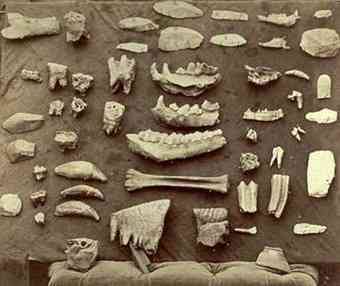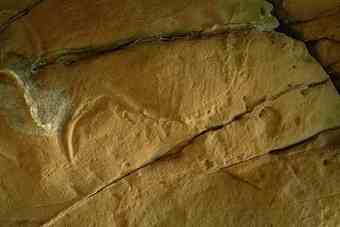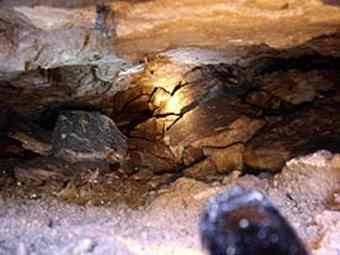Creswell Crags, the limestone gorge on the border between Derbyshire and Nottinghamshire, has for years offered up its secrets to archaeologists in search of evidence of the Ice Age inhabitants of its mysterious caves.
 Perhaps most famous among these is Church Hole, which in 2003 yielded the only known Ice Age art in Britain. Further archaeological finds across the site date back between 10,000 and 50,000 years and include flint and bone tools and carvings, proving that Ice Age hunters visited the site to hunt reindeer and horse.
Perhaps most famous among these is Church Hole, which in 2003 yielded the only known Ice Age art in Britain. Further archaeological finds across the site date back between 10,000 and 50,000 years and include flint and bone tools and carvings, proving that Ice Age hunters visited the site to hunt reindeer and horse.
Now a new exhibition is charting the fascinating history of archaeological investigation that has taken place over the past 200 years at the Crags, focussing on the finds and artefacts as well as the Victorian archaeologists who began the process of looking for insights into the prehistoric tribes sheltering there thousands of years ago.
 First excavated by Victorian antiquarians in 1876, Church Hole and other caves at the Crags were re-excavated in 2006 by archaeologists from the University of Sheffield using modern techniques. Sifting through the debris created by the Victorian excavations the dig has shed even more light on the thoughts and processes of the people that explored the cave over 200 years ago.
First excavated by Victorian antiquarians in 1876, Church Hole and other caves at the Crags were re-excavated in 2006 by archaeologists from the University of Sheffield using modern techniques. Sifting through the debris created by the Victorian excavations the dig has shed even more light on the thoughts and processes of the people that explored the cave over 200 years ago.
"We often focus on how the tools and techniques of archaeologists have changed over the years," says Exhibitions officer at Creswell Crags, Anna Griffiths. "However, this exhibition shows how the aims and motives of the archaeologists have changed, and what a dramatic effect this has had."
 The spoil heap left by the Victorians has revealed a range of artefacts that the Victorians missed and the exhibition is the first opportunity to put them on public display.
The spoil heap left by the Victorians has revealed a range of artefacts that the Victorians missed and the exhibition is the first opportunity to put them on public display.
"The interesting thing about all of these objects is that they have been dug up twice," adds Anna. "The earliest archaeologists on site removed them from the cave; either missed them or did not value them, and then left them in the spoil, whereas recent archaeologists have uncovered them once more and believe they provide valuable evidence."
 Among the Ice Age artefacts were Roman coins, brooches and pottery as well as medieval finds including coins, bottles and a unique medieval board game suggesting the cave may have been used as an illegal drinking and gambling den by the monks linked to Welbeck Abbey.
Among the Ice Age artefacts were Roman coins, brooches and pottery as well as medieval finds including coins, bottles and a unique medieval board game suggesting the cave may have been used as an illegal drinking and gambling den by the monks linked to Welbeck Abbey.
The caves may have provided shelter for Neanderthal and anatomically modern people through a crucial period of human evolution between 130,000 and 10,000 years ago, but the exhibition reveals how Creswell Crags has been used progressively over many centuries by many different peoples.
The ‘Great Excavations at Creswell Crags’ exhibition will be held from June 12 until winter 2010.
Source: Culture24
VIA «Creswell Crags exhibition explores 200 years of archaeological excavation»